John Paesano: Scoring the Maze Runner Saga
Interviews by Randall D. Larson
Recording Session Photos by Dan Goldwasser/ScoringSessions.com
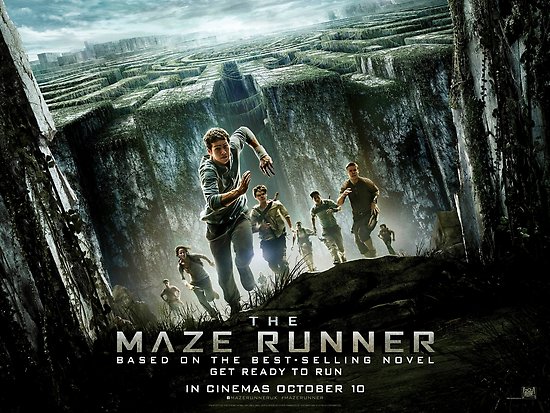
John Paesano began in film music as an “additional music” composer for Jerry Goldsmith, Marco Beltrami, and others, and then began scoring film trailers, receiving acclaim for his powerful music for the 2012 HUNGER GAMES Super Bowl trailer. John studied classical music with Professor Sally Dow Miller of Conservatoire de Paris, and continued his studies at Berklee College of Music where he focused on composition. Paesano is probably best known for composing THE MAZE RUNNER franchise as well as the Marvel Cinematic Universe television series DAREDEVIL and its spin-off, THE DEFENDERS.
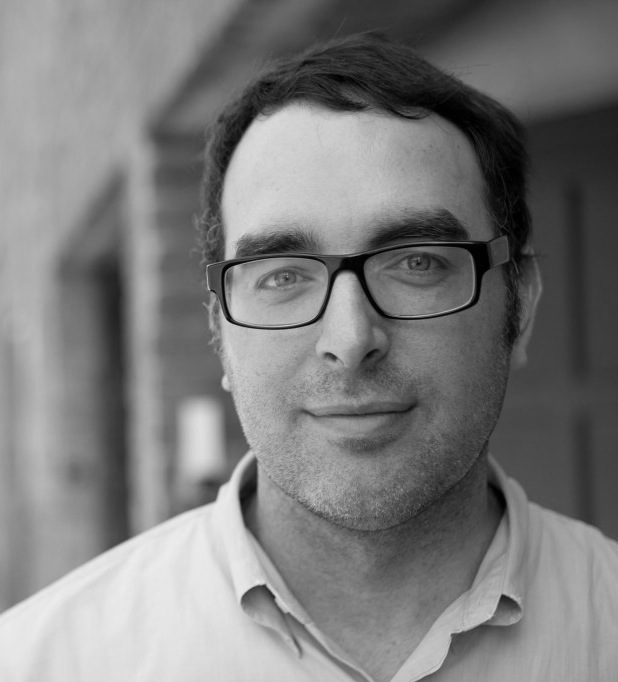
In 2013 he won the Annie Award for best music for Dreamworks’ DRAGONS: RIDERS OF BERK (2012), and received the Public Choice Award for THE MAZE RUNNER (2014) score at the 2015 World Soundtrack Awards. Paesano’s MAZE RUNNER score was also nominated for Best Score, Action/Adventure/Thriller Film by the Int’l Film Music Critics Assn in 2015. He was an Emmy nominee for Outstanding Main Title Theme for Netflix’s THE DEFENDERS (2017), a Hollywood Music in Media Award nominee in the Best Score category for his music to the Marvel’s Spider-Man video game (2018), and is a nominee for the same project at the forthcoming Game Awards in 2019.
Interviewed initially in May, 2015, after Paesano completed THE MAZE RUNNER and was starting on the second film, THE SCORCH TRIALS, with a second interview in February, 2018 after the third film, THE DEATH CURE, was completed and in release. Both interviews are combined into what follows.

Q: What initially interested you in scoring films and TV and how did you go about getting into the business in the early 2000s?
John Paesano: When I was a kid I saw the Spielberg movie EMPIRE OF THE SUN. I was around the same age as the boy in it, or maybe a little bit younger, and for some reason the movie really resonated with me. At the time it wasn’t that I knew I wanted to be a composer right away but there was something that really fascinated me with that movie. I ended up getting the soundtrack and that became something I was really inspired by. So from a very young age I kind of knew what direction I wanted to point toward. I guess that’s kind of odd; most kids around 9 or 10 years old don’t have such a focus on what they want to do in their later years, but for some reason it just really stuck, and I had the goal of becoming a film composer ever since.
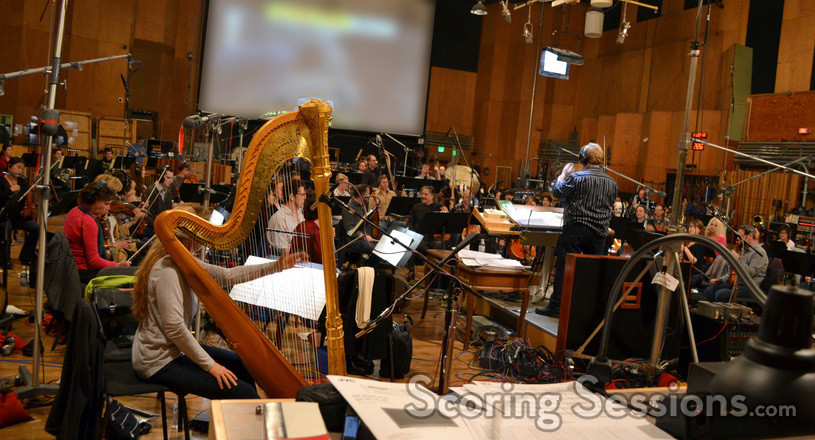
Q: Among your early work as a composer were several “additional music” credits on the Jerry Goldsmith scores SUM OF ALL FEARS, STAR TREK NEMESIS and TIMELINE. How did you get those assignments, how did you work with Jerry on them, and what did you learn from those experiences?
John Paesano: Jerry was one of those guys who I was able to work with and with around. Film composing is not so much of a one-man operation as it used to be; you’ll always see “music by so-and-so” but underneath “so-and-so” there’s definitely a lot of people behind the scenes that play a part in getting this music done and out the door. Film scores range anywhere from 200-500 pages of score, so you’re taking about a massive amount of music that has to be done in a relatively short amount of time. What we deal with these days versus the days when John Williams and Jerry Goldsmith wrote a lot of their great scores is that we’re dealing with much quicker timelines than they had. The technology has really taken the process of filmmaking and sped it up. Of course, on the executive level, the quicker you get things done the less money you have to spend, so you’re starting to see these schedules reaching a very accelerated pace. There are some positives to that and there are some negatives to that, but it’s just what it is now. We’re getting into this mentality to where it takes a village to get one of these scores done and out the door. I always say we’re transferring into the age of soundtrack composers to soundtrack producers, not that there isn’t a lot of composing going on. There still is, but the process of actual scoring to picture is a lot different than it used to be. It’s happening, I think, in all facets of filmmaking, whether it’s scoring or editorial or visual effects; all these jobs are happening at an accelerated pace, so the business has changed a lot over the last 10-15 years. That being said, a lot of new composers start out being a member of those teams and being able to see how it all works behind the scenes; that’s one of the early jobs you get as a young composer in town. That’s how the whole thing with Jerry came about.
Q: Your music in the 2012 HUNGER GAMES Super Bowl trailer gave you a lot of exposure – how did that come about?
John Paesano: I have a big sound, and that was always one of the tricks for me when I was coming up. When you’re coming up in the industry, a lot of films at first want to hire you, they aren’t films like MAZE RUNNER or LORD OF THE RINGS or these big, big films. They’re always these small little indie projects that require a guitar, a solo fiddle, and a trash can. I’ve always had a very big sound so it was tough in the beginning because a lot of these independent films really didn’t have the kind of palette for what I thought I was best at, but the one place that did were movie trailers, so that was one of the places I fit in at the early part of my career. I’ve done numerous trailers and most of the time trailers are scored bigger than the actual film score. So that was one of those places where I was able to utilize that big orchestral, cinematic sound, so that gave me some success at the very beginning of my career in that world.
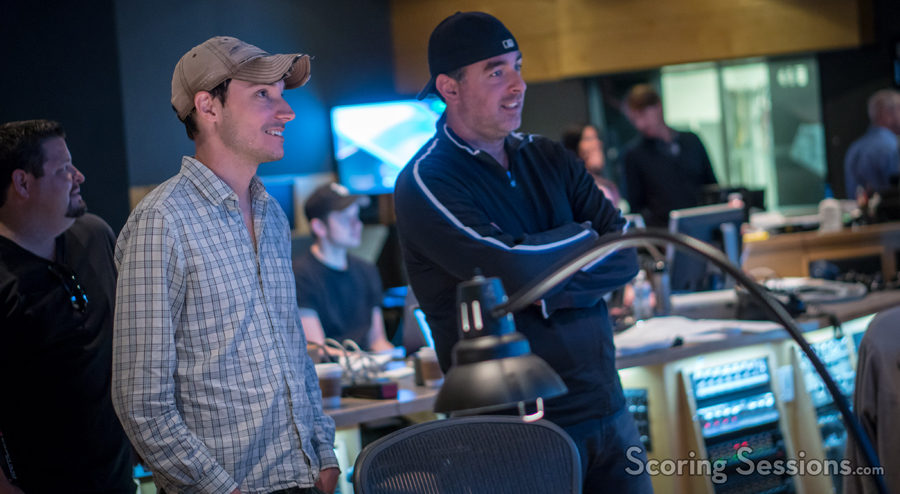
Q: How do the expectations of the producer and director and the public tie in to all that, as far as what they expect to hear nowadays? Where has the bar been set?
John Paesano: I’m a throwback guy. I’m with Williams, Barry, Horner, Goldsmith – those were the guys that I loved listening to when I was a kid. But filmmaking is a lot different now than it was back when they began scoring films – and the audiences are a lot different now than they were then too. Wes Ball, my director on the MAZE RUNNER films, loves the old scores, STAR WARS, all the James Cameron-James Horner collaborations… but when we got into making MAZE RUNNER we realized that some of the stuff we can take and some of it we can’t – some of it holds up today and some of it doesn’t anymore, so at the end of the day the job is servicing the picture. It’s not about making a great soundtrack. It’s about making sure I have a score that works with the movie very well. If a great soundtrack comes out of that, it’s icing on the cake.
“As the film starts off the music is very ambient, it’s very unsure of itself, there’s not really an established theme, the score is trying to figure out its place in this world just as our character is. As the film progresses and as Thomas learns of this greater world that he’s part of and more and more technology is introduced to the film and the story starts to take shape, so does our score.”
Q: What was your technique of creating and interweaving your themes to fit the story of THE MAZE RUNNER?
John Paesano: The thematic design is interesting. When I first started out on MAZE RUNNER, Wes really wanted a score like JURASSIC PARK. He thought it would be fantastic and I agreed, after reading the script. That big, thematic classical orchestra sound: we’ve got giant walls, we’re out in nature, it all takes place outside, there’s definitely a thriller element to it, it seemed like it would work perfectly fine – but then when I got into sketching I started realizing that a JURASSIC PARK-esque score was not going to work for this film at all. It had to be darker, it had to be more mysterious, and it had to be a little bit more modern. So it was one of those things where you never really know what’s going to fit until you really start throwing music up against screen. After we realized that wasn’t going to work, I decided, after watching the first cut of the film, that the story and the music had to be told through the eyes of the lead character, Thomas, and we could never really leave our main character. I wanted to let the music explain where Thomas’ head was during all parts of the film. As the film starts off the music is very ambient, it’s very unsure of itself, there’s not really an established theme, the score is trying to figure out its place in this world just as our character is. As the film progresses and as Thomas learns of this greater world that he’s part of and more and more technology is introduced to the film and the story starts to take shape, so does our score.
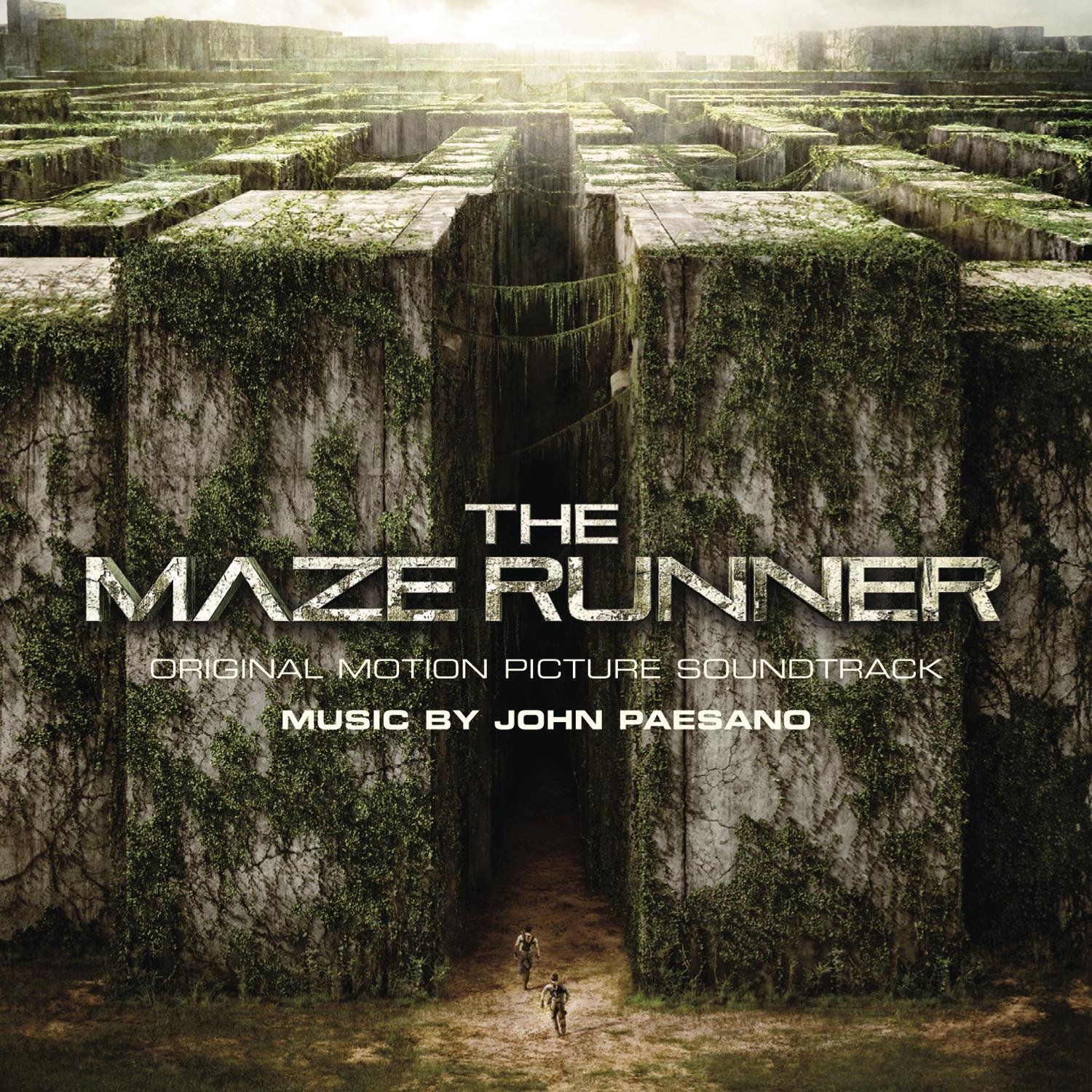 Q: How did you differentiate, musically, the world of the meadow with that of the Maze, and, ultimately, the real world outside?
Q: How did you differentiate, musically, the world of the meadow with that of the Maze, and, ultimately, the real world outside?
John Paesano: The glade was interesting. I was actually able to go and visit the set while they were filming, which was a real great opportunity for me to be out there and see how these boys were living in this environment. They were basically marooned out there and they had to make use of what they had in their surroundings, and I did essentially the same thing with the music. I went out and sampled a lot of different things they had on the set, whether it was oil drums or clicking bamboo together or bowing wire. I captured all these sounds on set and brought all that information back here to L.A. and I was able to sample it into the computer, and then incorporate those sounds in the beginning part of the film. So the music consisted of a lot of things that were more essential to where the characters were actually living in the environment – it’s a lot of wind instruments, a lot of skinned drums, we still have the orchestral backdrop, but a lot of the colors were very organic by nature. I’m using shakuhachi flutes and I’m using a lot of ethnic drums and being very naturalistic in my sound. Then, once they get outside the walls and through the Maze, the music starts to evolve into a more organized, orchestral hybrid sound as Thomas learns about the bigger world outside of the Maze.
“In SCORCH TRIALS, now we’re in full technological world and the score for that film is much more hybrid influenced; the music becomes more about the group and the journey of this group of friends and where are they going to, and there’s this element to hope to it.”
Q: How did the score change and keep up with the developing arc of the storyline as it progressed into the second and third films?
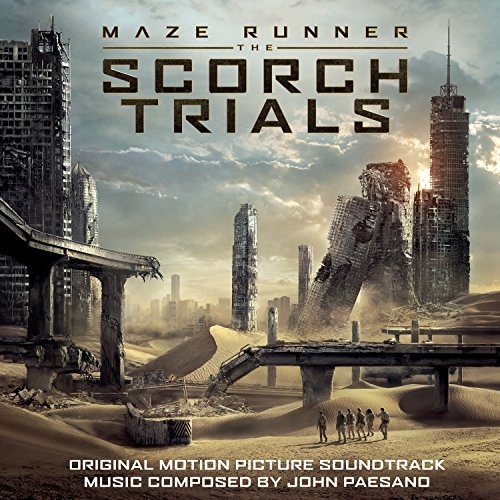 John Paesano: It was tricky. Even though I wasn’t initially hired for the second or third film from the onset, I always planned to be, so I had an idea of how I’d want to handle it. When we started working on MAZE RUNNER we did have a couple melodic and harmonic concepts that are in the film score, but I wouldn’t necessarily call MAZE RUNNER a highly melodic/thematic score as much as I would say that the elements of it are more in the sonic texture of it, as far as the palette goes. It’s more of a combination of a thematic palette along with a texture, a color, and a sound that was unique to it. In SCORCH TRIALS, now we’re in full technological world and the score for that film is much more hybrid influenced; the music becomes more about the group and the journey of this group of friends and where are they going to, and there’s this element to hope to it. And then by the time we get to THE DEATH CURE it’s both worlds colliding; it’s a summarization of these characters’ past, and Teresa has a mission and a theme that’s tapping into that, Thomas has his story, and then we have Gully and that world, so there’s these separate stories that are coming to some sort of closure that we’re trying to convey with the music. So it was just playing on that idea, where these kids came from, where they go, and where they end up, and trying to make the sound of the score take that same journey. We never really were able to do a proper musical ending to the first two movies because they were always continuations, so when we got to this final cue of DEATH CURE, which is this seven-and-a-half minute cue, we were able to write an ending now after the previous two films. It was great to finally put a period on the end of some of these storylines, and wrap them up.
John Paesano: It was tricky. Even though I wasn’t initially hired for the second or third film from the onset, I always planned to be, so I had an idea of how I’d want to handle it. When we started working on MAZE RUNNER we did have a couple melodic and harmonic concepts that are in the film score, but I wouldn’t necessarily call MAZE RUNNER a highly melodic/thematic score as much as I would say that the elements of it are more in the sonic texture of it, as far as the palette goes. It’s more of a combination of a thematic palette along with a texture, a color, and a sound that was unique to it. In SCORCH TRIALS, now we’re in full technological world and the score for that film is much more hybrid influenced; the music becomes more about the group and the journey of this group of friends and where are they going to, and there’s this element to hope to it. And then by the time we get to THE DEATH CURE it’s both worlds colliding; it’s a summarization of these characters’ past, and Teresa has a mission and a theme that’s tapping into that, Thomas has his story, and then we have Gully and that world, so there’s these separate stories that are coming to some sort of closure that we’re trying to convey with the music. So it was just playing on that idea, where these kids came from, where they go, and where they end up, and trying to make the sound of the score take that same journey. We never really were able to do a proper musical ending to the first two movies because they were always continuations, so when we got to this final cue of DEATH CURE, which is this seven-and-a-half minute cue, we were able to write an ending now after the previous two films. It was great to finally put a period on the end of some of these storylines, and wrap them up.
“Film scoring is one of the most collaborative processes in filmmaking. There’s lots of people, lots of opinions, and lots of decision makers… the challenge about doing a trilogy like MAZE RUNNER is just trying to balance all of those opinions and navigate through that system.”
Q: What’s been most challenging for you in scoring the MAZE RUNNER series, and what opportunities have been most rewarding or personally satisfying?
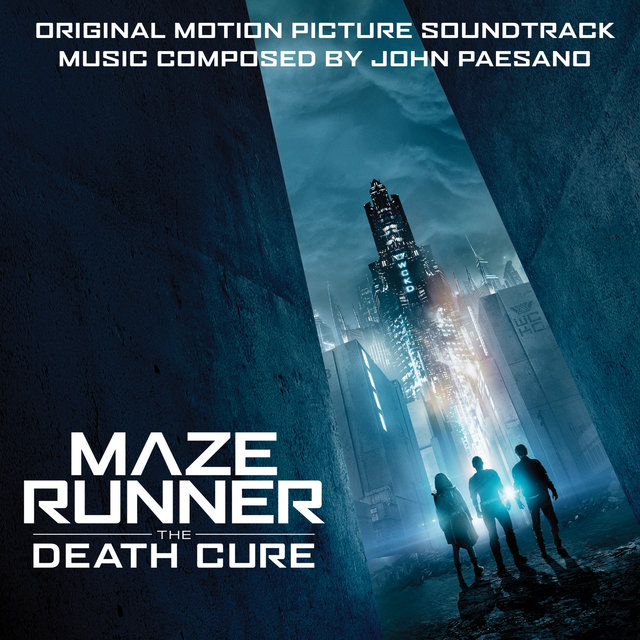 John Paesano: Film scoring is really interesting; it’s one of the most collaborative processes in filmmaking. There’s lots of people, lots of opinions, and lots of decision makers. Well, there’s ultimately one decision maker – but you’re constantly showing your work to people who want to give input and give direction and have ideas, and when you’re talking about music – let’s face it, everybody loves music, everybody’s got ideas about what type of music they like, what type of music they want to see in movies. So I think the challenge about doing a trilogy like MAZE RUNNER is just trying to balance all of those opinions and navigate through that system. I think that’s one of the biggest challenges of scoring films in general, but with MAZE RUNNER it was interesting, the first film, in studio terms, it was a pretty low budget movie with a $30 million budget. We were one of those films over at Fox that they almost forgot about! They let us do our thing and we were able to have some creative freedom, and it was a fun process and pretty flawless. And then MAZE RUNNER was a huge hit and as time went on more people got involved – the bigger the budget the more people came onboard, that’s the nature of big filmmaking. And every year the project grew a little bit and those challenges came up more, and as a film composer it’s the kind of thing you don’t think about when you write music for a film; but it’s that political side and making sure you are pleasing all the different camps and making sure you’re checking off all the different criteria that people want, because, let’s face it, they make these movies to sell tickets and to make money. And that’s just the business side of it, and that’s one thing when you become a film composer that you don’t really think of in the early stages, but when you get to a certain level you realize how important that process is, and depending on how you play that process, it can really affect the music and the creative ideas of what you’re trying to accomplish. And that’s obviously not just for music, it’s for all sides of the creative sphere when it comes to making big studio films. So I think managing that process and coming up at the same time as Wes was, we were somewhat, if not complete rookies to it, we didn’t have thirty, forty years of experience in dealing with that side of it, like some of the guys do. And I’ll say, one thing about Fox that I love is that they were always very respectful of the creative process, and they’re very good at working with you on what they’re going for and what you’re going for, and they always seem to find a happy medium.
John Paesano: Film scoring is really interesting; it’s one of the most collaborative processes in filmmaking. There’s lots of people, lots of opinions, and lots of decision makers. Well, there’s ultimately one decision maker – but you’re constantly showing your work to people who want to give input and give direction and have ideas, and when you’re talking about music – let’s face it, everybody loves music, everybody’s got ideas about what type of music they like, what type of music they want to see in movies. So I think the challenge about doing a trilogy like MAZE RUNNER is just trying to balance all of those opinions and navigate through that system. I think that’s one of the biggest challenges of scoring films in general, but with MAZE RUNNER it was interesting, the first film, in studio terms, it was a pretty low budget movie with a $30 million budget. We were one of those films over at Fox that they almost forgot about! They let us do our thing and we were able to have some creative freedom, and it was a fun process and pretty flawless. And then MAZE RUNNER was a huge hit and as time went on more people got involved – the bigger the budget the more people came onboard, that’s the nature of big filmmaking. And every year the project grew a little bit and those challenges came up more, and as a film composer it’s the kind of thing you don’t think about when you write music for a film; but it’s that political side and making sure you are pleasing all the different camps and making sure you’re checking off all the different criteria that people want, because, let’s face it, they make these movies to sell tickets and to make money. And that’s just the business side of it, and that’s one thing when you become a film composer that you don’t really think of in the early stages, but when you get to a certain level you realize how important that process is, and depending on how you play that process, it can really affect the music and the creative ideas of what you’re trying to accomplish. And that’s obviously not just for music, it’s for all sides of the creative sphere when it comes to making big studio films. So I think managing that process and coming up at the same time as Wes was, we were somewhat, if not complete rookies to it, we didn’t have thirty, forty years of experience in dealing with that side of it, like some of the guys do. And I’ll say, one thing about Fox that I love is that they were always very respectful of the creative process, and they’re very good at working with you on what they’re going for and what you’re going for, and they always seem to find a happy medium.
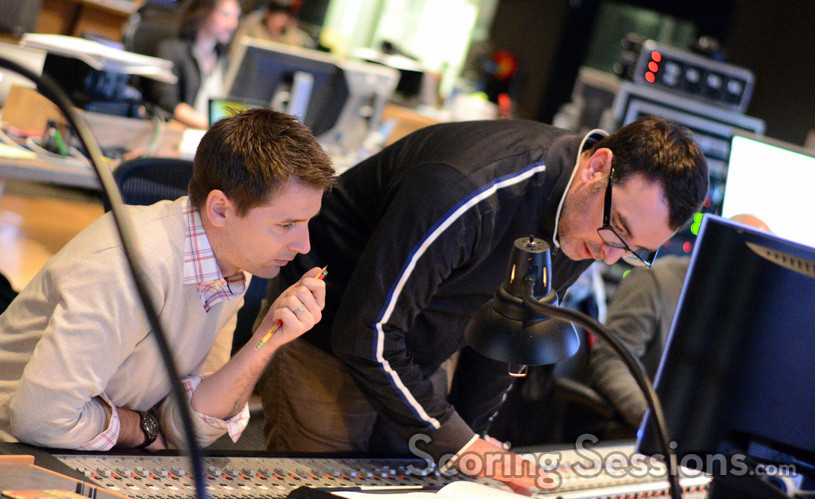
Q: I’ve noticed that here you have your own cadre of “additional music” composers on these films, so I guess you’ve come full circle from where you started!
John Paesano: Yeah! The mocking-up process of the score is very, very time consuming. I can write a piece of music but then I need to get into a computer and it needs to be mocked up so when Wes comes in to hear it, it will sound like it will when an orchestra plays it so he can sign off on it. The days of a director coming into the music studio and me sitting at a piano and going “Well, here’s what your main theme’s going to sound like” and him saying, “Oh, great I can’t wait to hear it when we record it!” are behind us! Studio executives want to hear what the mock-ups sound like, the directors and producers want to hear it, so we have to mock-up these orchestral scores in the computer, so besides the writing, that mock-up process requires manpower. You almost have to think of it as orchestration for the computer, and that’s what a lot of composers end up doing with the “additional-writing” and “additional arrangement” side as well.
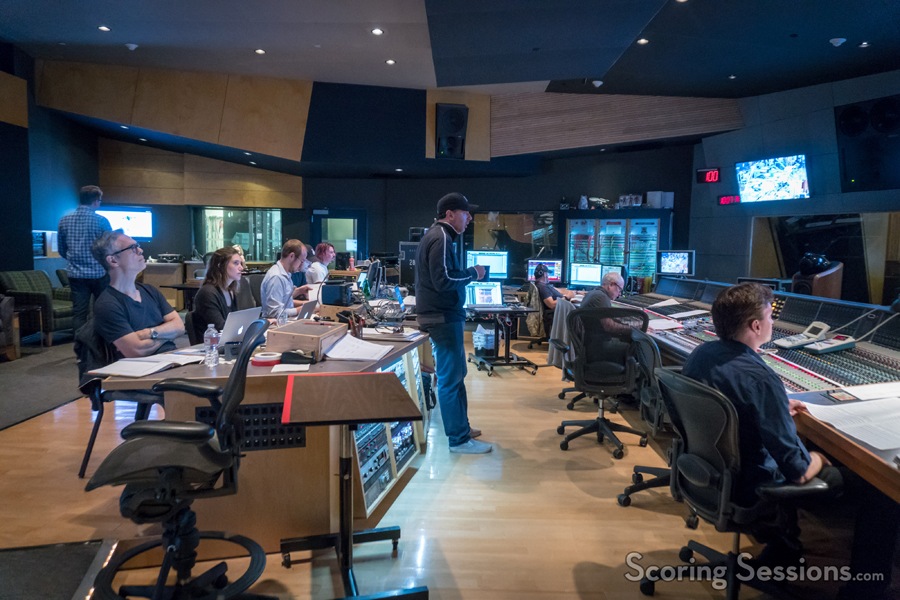
Q: You also scored the Amazon sci-fi series, SALVATION last year – would you describe a bit about the kind of music you wrote for that show and what kind of budgetary/deadline limitations it may have had?
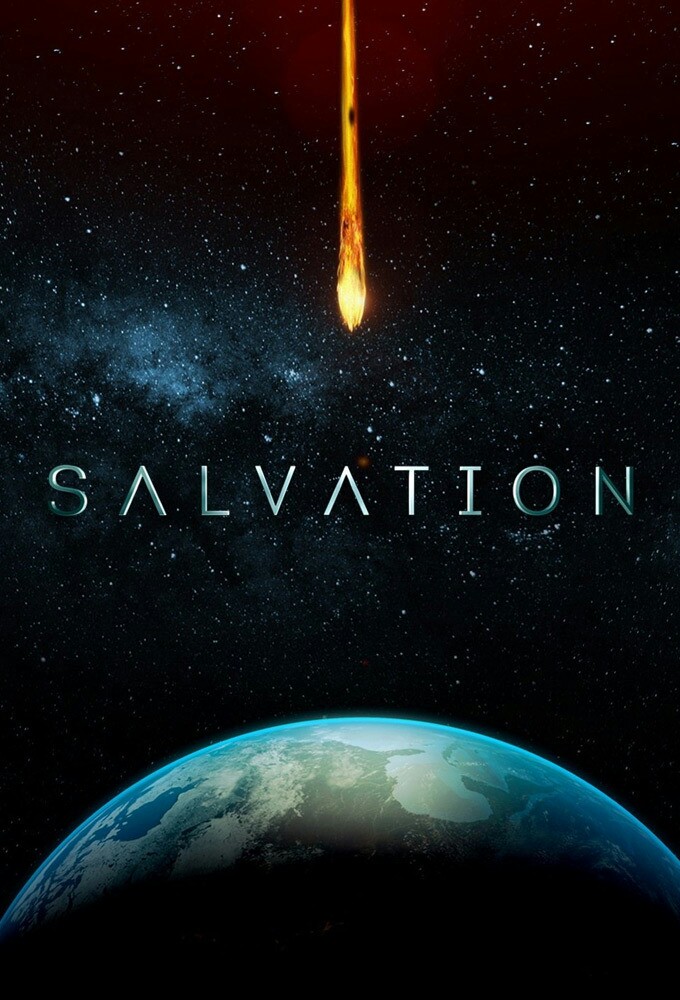 John Paesano: Network shows are tough, from a deadline point of view. Network television, unlike Netflix and the other subscription-based services, run on a week-to-week schedule. You get the episode on Monday and you’ve got to have the music in by Thursday, that type of thing. It’s rapid-fire and super-quick and I think it’s really about being prepared. When you are working on a pilot and if people are unsure of what they want, there’s no time to do any type of experimenting. With SALVATION, we probably wrote the pilot score thirty times! You bang your head against the wall when you’re doing it because it’s so much work, but that’s where all your experimenting happens, before the show goes to series. When you get into the season and you’re going week-to-week, at least you’ve done all the dirty work in the pilot portion of the show. You always hear people talking about how tough pilots are, and that’s one of the main reasons. It’s also the same thing with the writers and probably the same thing with the actors and everything, you cram so much experimentation into that month, from all creative sides of it. With SALVATION, my showrunners were just fantastic in knowing the vision that they wanted, they already had the story arc pretty much figured out for the whole season, and they intimately knew all the characters and they were very descriptive about them. They were also very good at playing music for me and showing things to me that they responded to, whether it was from other scores or other TV shows, or just music in general, they were very fluent in speaking that musical language, so it was very helpful.
John Paesano: Network shows are tough, from a deadline point of view. Network television, unlike Netflix and the other subscription-based services, run on a week-to-week schedule. You get the episode on Monday and you’ve got to have the music in by Thursday, that type of thing. It’s rapid-fire and super-quick and I think it’s really about being prepared. When you are working on a pilot and if people are unsure of what they want, there’s no time to do any type of experimenting. With SALVATION, we probably wrote the pilot score thirty times! You bang your head against the wall when you’re doing it because it’s so much work, but that’s where all your experimenting happens, before the show goes to series. When you get into the season and you’re going week-to-week, at least you’ve done all the dirty work in the pilot portion of the show. You always hear people talking about how tough pilots are, and that’s one of the main reasons. It’s also the same thing with the writers and probably the same thing with the actors and everything, you cram so much experimentation into that month, from all creative sides of it. With SALVATION, my showrunners were just fantastic in knowing the vision that they wanted, they already had the story arc pretty much figured out for the whole season, and they intimately knew all the characters and they were very descriptive about them. They were also very good at playing music for me and showing things to me that they responded to, whether it was from other scores or other TV shows, or just music in general, they were very fluent in speaking that musical language, so it was very helpful.
Q: What kind of music did it need, because here you’ve got a plot that’s been covered before – an asteroid is on its way to collide with Earth – but of course this show is doing it in its own unique way, so you had to deal with tension, a variety of characters and their interaction…
John Paesano: We always wanted the idea that there’s the clock and it’s ticking down, always creating tension. So that was the goal and the concept, and in every one of those cues there was always this motor going in the background, there’s always something keeping time. Not necessarily percussion as much as whether it’s a “tick” or whether it’s sticks doing a steady quarter-note pace or whether it’s a 16th-note pace; there’s always something that never ceases to let up through each of the cues. So our concept was that we always wanted this tension and this clock that kept going, because in the subtext of the film – they’re racing against the clock to figure all this stuff out.
Q: Was that an orchestral score or were you limited to samples and a digital ensemble?
John Paesano: It was orchestral but it was definitely a smaller-ensemble show. We didn’t need to have a big, huge orchestral sound to it. I would say the palette was organic by nature but it wasn’t a big 70-piece orchestra sound.
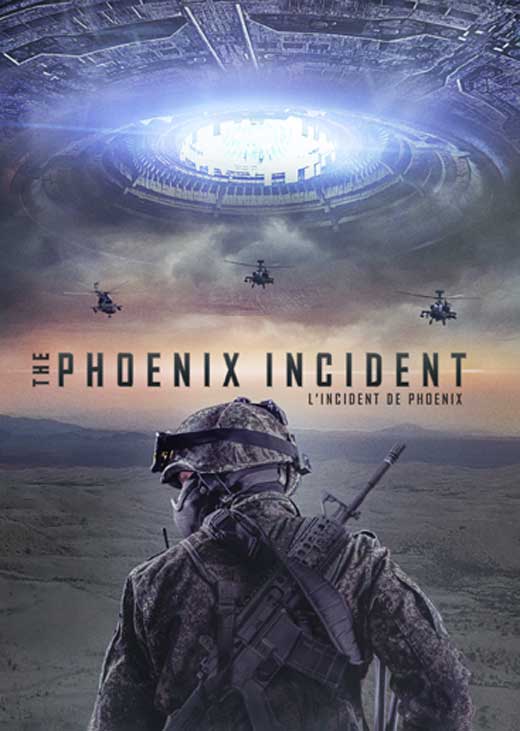 Q: You’d scored the sci-fi thriller movie THE PHOENIX INCIDENT in 2015 which is an interesting take on what may or may not have been an actual event. What kind of challenges did this pose for music, being a found-footage/documentary styled film?
Q: You’d scored the sci-fi thriller movie THE PHOENIX INCIDENT in 2015 which is an interesting take on what may or may not have been an actual event. What kind of challenges did this pose for music, being a found-footage/documentary styled film?
John Paesano: I worked with Keith Arem on it and he’s got a huge background in post-production, sound, and music himself, in the video game world. He’s transitioned now into a role where he’s more of a filmmaker, so it was really cool working with him, especially with sound and music, because he really understands that aspect of it. I had written pieces of music years ago for something and he got his hands on that and began temping the film with some of that. I got a call from him one day saying, “I’m doing this found footage movie and I want you to come by and take a look at it, I’ve been using some of your music.” So I went over to his place and looked at it and it was a cool, fun experience. I loved working with him. It was challenging; we came at it from the idea that we really weren’t creating a functional score but it was more scoring the idea that it was a documentary, and towards the end of it we got more into a traditional scoring aspect. It was one of those things where you wanted people to watch it and go “Am I watching a real documentary here? Is this a real found footage situation?” It’s kind of like that BLAIR WITCH idea. It’s challenging doing those, especially when you come from a background like mine where I do so much traditional type of film scoring, to approach a project with this idea of trying to trick the audience into thinking that they’re experiencing something that’s different than what they’re really experiencing. Using music as a medium to sell that type of thing was a challenge.
Q: What kind of palette did you have to accomplish that on this film?
John Paesano: With all my scores there’s always an orchestral element – that’s one of the first things I usually look for – but this one was very hybrid, very ambient, very I’ll say “documentarian” style. We didn’t want to score it like it was a big Hollywood film, although towards the end of the movie there were definitely some cues where he wanted it to feel bigger. So I think we did push it a little bit towards the end, but the majority of the film is definitely told in a much smaller and more ambient palette.
“John Powell’s score is so interwoven with the fabric of that property and it’s just such a beautiful score. I don’t think you could have DRAGONS without incorporating his music.”
Q: You’ve also been scoring the animated Dreamworks TV series DRAGONS: RIDERS OF BERK. As a spin-off of HOW TO TRAIN YOUR DRAGON, was there any requirement to tie it in musically with the film, or were you given a free hand?
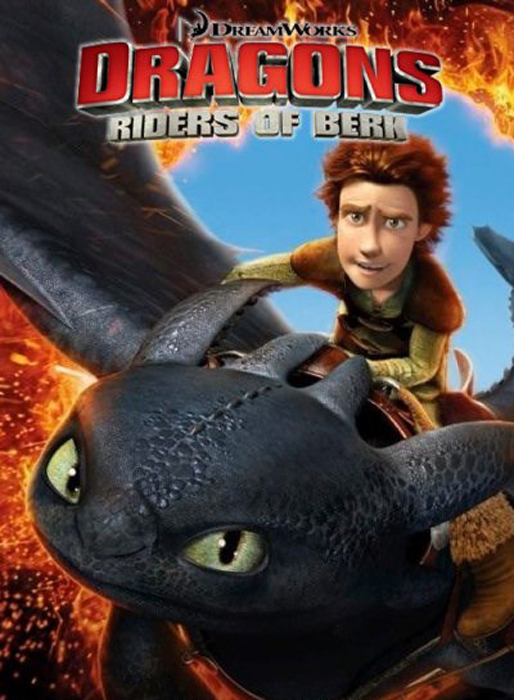 John Paesano: There was no requirement but I thought there was a necessity to do it, just because John Powell’s score is so interwoven with the fabric of that property and it’s just such a beautiful score. I don’t think you could have DRAGONS without incorporating his music. Now, using thematic material like that throughout a television series is tricky because you can’t just keep pounding people with the same themes on a weekly basis over and over again. There has to be a lot more variety because we’re talking about a lot more hours of music throughout the whole series, so I think we’ve built a lot of stuff that’s in the spirit of John’s original score for DRAGON but we’ve tried to do our own spin on it at the same time. Now I can honestly say that DRAGONS is one of the hardest shows that I do, mostly because, a: there’s just not a big budget for it, and b: DreamWorks expects HOW TO TRAIN YOUR DRAGON! The studio executives don’t care whether it’s live or whether it’s in the box, they want it to sound great no matter what. They don’t care they we don’t have the budget for live musicians, they don’t think like that. They just go: “This is what we have, make it sound great.” And it’s true, you’ve got to make it sound great, and the audience won’t forgive you either if it doesn’t sound great! So you’ve got to really make sure that the mock-ups sound great. Sometimes doing a big hybrid score like MAZE RUNNER is a lot easier to do than a very exposed digital orchestral score like DRAGONS. A lot of work goes into creating that on a weekly basis, and since it’s animation it’s wall-to-wall music. You’re looking at 28 minutes of fully orchestral mocked-up big John Powell-type music, so it’s a very challenging project. But it’s a great show, so the hard work pays off. I won an Annie Award for scoring the first season, which I’m really proud of.
John Paesano: There was no requirement but I thought there was a necessity to do it, just because John Powell’s score is so interwoven with the fabric of that property and it’s just such a beautiful score. I don’t think you could have DRAGONS without incorporating his music. Now, using thematic material like that throughout a television series is tricky because you can’t just keep pounding people with the same themes on a weekly basis over and over again. There has to be a lot more variety because we’re talking about a lot more hours of music throughout the whole series, so I think we’ve built a lot of stuff that’s in the spirit of John’s original score for DRAGON but we’ve tried to do our own spin on it at the same time. Now I can honestly say that DRAGONS is one of the hardest shows that I do, mostly because, a: there’s just not a big budget for it, and b: DreamWorks expects HOW TO TRAIN YOUR DRAGON! The studio executives don’t care whether it’s live or whether it’s in the box, they want it to sound great no matter what. They don’t care they we don’t have the budget for live musicians, they don’t think like that. They just go: “This is what we have, make it sound great.” And it’s true, you’ve got to make it sound great, and the audience won’t forgive you either if it doesn’t sound great! So you’ve got to really make sure that the mock-ups sound great. Sometimes doing a big hybrid score like MAZE RUNNER is a lot easier to do than a very exposed digital orchestral score like DRAGONS. A lot of work goes into creating that on a weekly basis, and since it’s animation it’s wall-to-wall music. You’re looking at 28 minutes of fully orchestral mocked-up big John Powell-type music, so it’s a very challenging project. But it’s a great show, so the hard work pays off. I won an Annie Award for scoring the first season, which I’m really proud of.
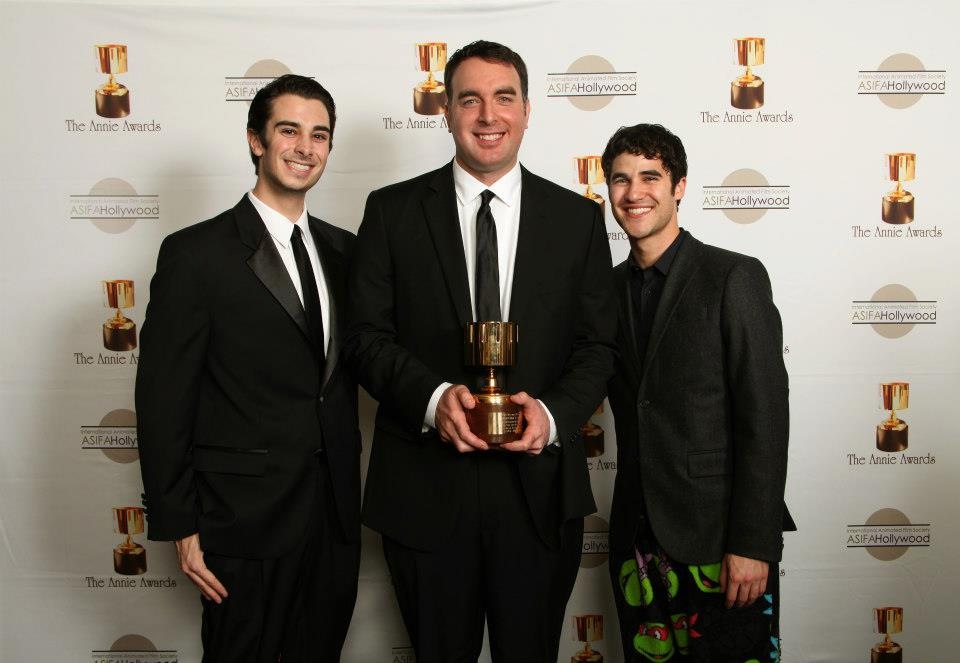
Special thanks to Peter Hackman and Neil Kohan for their assistance in facilitating the first interview, and Javier Garcia & Beth Krakower (may she rest in peace, much loved and much missed) of The Krakower Group for the second. And thanks to John Paesano for sharing his perspective and experiences scoring these films.
Recording Session photos courtesy of Dan Goldwasser/Scoring sessions.com
https://www.facebook.com/scoringsessions/
https://twitter.com/scoringsessions
https://www.instagram.com/scoringsessions/ dsg@scoringsessions.com




